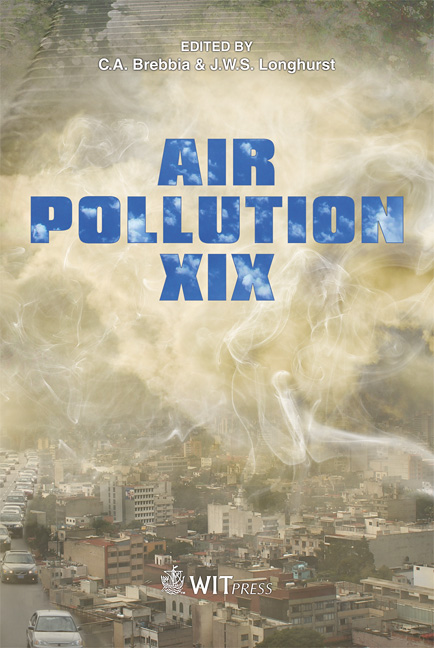Correlation Between The Mass Of PM2,5 And The Chemical Composition Of Acid Aerosols In The Northwest Of The Metropolitan Zone Of Mexico City
Price
Free (open access)
Transaction
Volume
147
Pages
6
Page Range
301 - 306
Published
2011
Size
320 kb
Paper DOI
10.2495/AIR110281
Copyright
WIT Press
Author(s)
Y. I. Falcón, E. Martinez & L. Cortes
Abstract
Mexico City has been considered one of the most polluted areas worldwide. Since it has a population of over 20 million, some 3 million vehicles and over 4000 industries, ambient air monitoring and respiratory and cardiovascular diseases surveillance is extremely important in order to evaluate particles’ effects on human health. Acid aerosol sampling was performed with an annular denuder system and particle sampling was carried out with a low volume sampler. Sampling was 24 hours from Monday to Tuesday and Thursday to Friday. Particle and acid aerosol sampling was simultaneous. Both samplers were located in the air monitoring cabin at the Metropolitan Autonomous University, Azcapotzalco campus. The monitoring campaign lasted from January to July, 2004. During January and February sulfur dioxide concentrations were higher compared to sulfates concentrations but in June and July, sulfates concentrations were higher than concentrations of sulfur dioxide. In January and February, nitrates concentrations were the highest and nitric acid concentrations were the lowest during the whole campaign. In the correlation between Chemical Species / Mass: Nitrates / Mass; Sulfates / Mass, the highest rate was for Sulfates / Mass. Regarding mass, there were two periods of uniform concentration. In the first one, from January to March, mass concentrations were higher than they were in the period April to July. During the June–July period, meteorological conditions (high relative humidity and low wind speed) favored sulfates formation while in January and February relative humidity favored nitrates formation. Results of this correlation show that the dominant chemical species in collected particles
Keywords
PM2.5, acid aerosols





